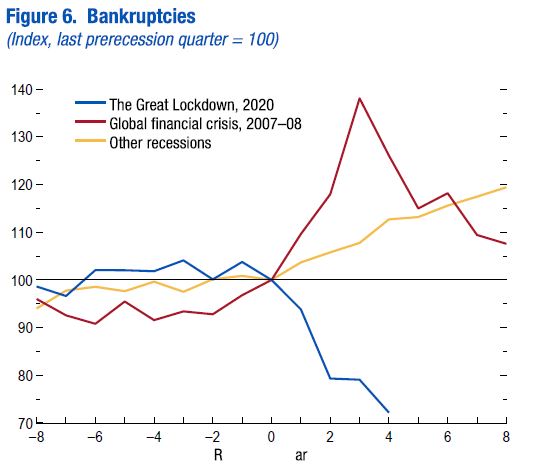The World Economic Outlook (WEO) update of the global economy hints that, although recent vaccine approvals and rollout have increased hopes of a turnaround in the pandemic later this year, renewed and new variants of the virus pose serious concerns for the growth outlook and threaten to dwarf this growth momentum.
Amid exceptional uncertainty, the global economy is projected to grow 5.5 percent in 2021 and 4.2 percent in 2022, following baseline forecasts. The 2021 forecast is revised up by 0.3 percentage points relative to the previous year. This reflects expectations of a vaccine-led strengthening of activity later in the year and supplemented with policy support in some large economies.
According to the WEO update, the projected recovery from the contraction of the global economy in the previous year (estimated at -3.5%) will vary significantly across countries, depending on the availability or access to medical interventions, effectiveness of policy support, exposure to cross-country spillovers, and structural characteristics entering the crisis.

These notwithstanding, lingering concerns that are a counter point to this growth trajectory include surging infections which began in late 2020, renewed lockdowns, logistical problems with vaccine distribution, and uncertainty about take-up.
More to the point, much remains to be done on the health and economic policy fronts to limit persistent damage from the severe contraction of 2020 and ensure a sustained recovery.
The update raises three interrelated issues against which concrete views must be formed in light of the global outlook: The first involves the extent to which restrictions needed to slow down the transmission of the virus affect economic activity in the short term before vaccine protection across societies begins. The second involves the extent to which vaccine-rollout expectations and policy support affect activity and the third has to do with the evolution of financial conditions and commodity prices.
Global Trade Activity
Consistent with recovery in global activity, global trade volumes are forecast to grow about 8 percent in 2021, before moderating to 6 percent in 2022.
Pertaining to trade compositions, services trade is expected to recover more slowly than merchandise volumes, albeit, consistent with cross-border tourism and business travels until transmission declines everywhere.
Inflation
Even though economic recovery is anticipated this year, output gaps are not expected to close until after 2022. Consistent with persistent negative output gaps, inflation is expected to remain subdued from 2021 to 2022.
For advanced economies, inflation is forecasted to remain generally below central bank targets at 1.5 percent. Among emerging markets and developing economies inflation is projected just above 4 percent, which is lower than the historical average of the group.

Policies to Strengthen the Recovery
In the previous recessionary year, aggressive and swift fiscal, monetary and financial sector policies have helped prevent worse outcomes. In some cases, transfers to households quickly boosted consumer spending, particularly for those with liquidity constraints.
More so, transfers to firms, together with credit guarantees and funding for-lending programs, have prevented bankruptcies that might otherwise have occurred.
According to IMF staff analysis of a sample of 13 advanced economies covering 1990 to the Covid crisis, it was found that bankruptcies have surprisingly declined during the recession in 2020 than in any other period of recession.
READ ALSO: Vaccines will power 5.5% global economic growth in 2021- IMF



















